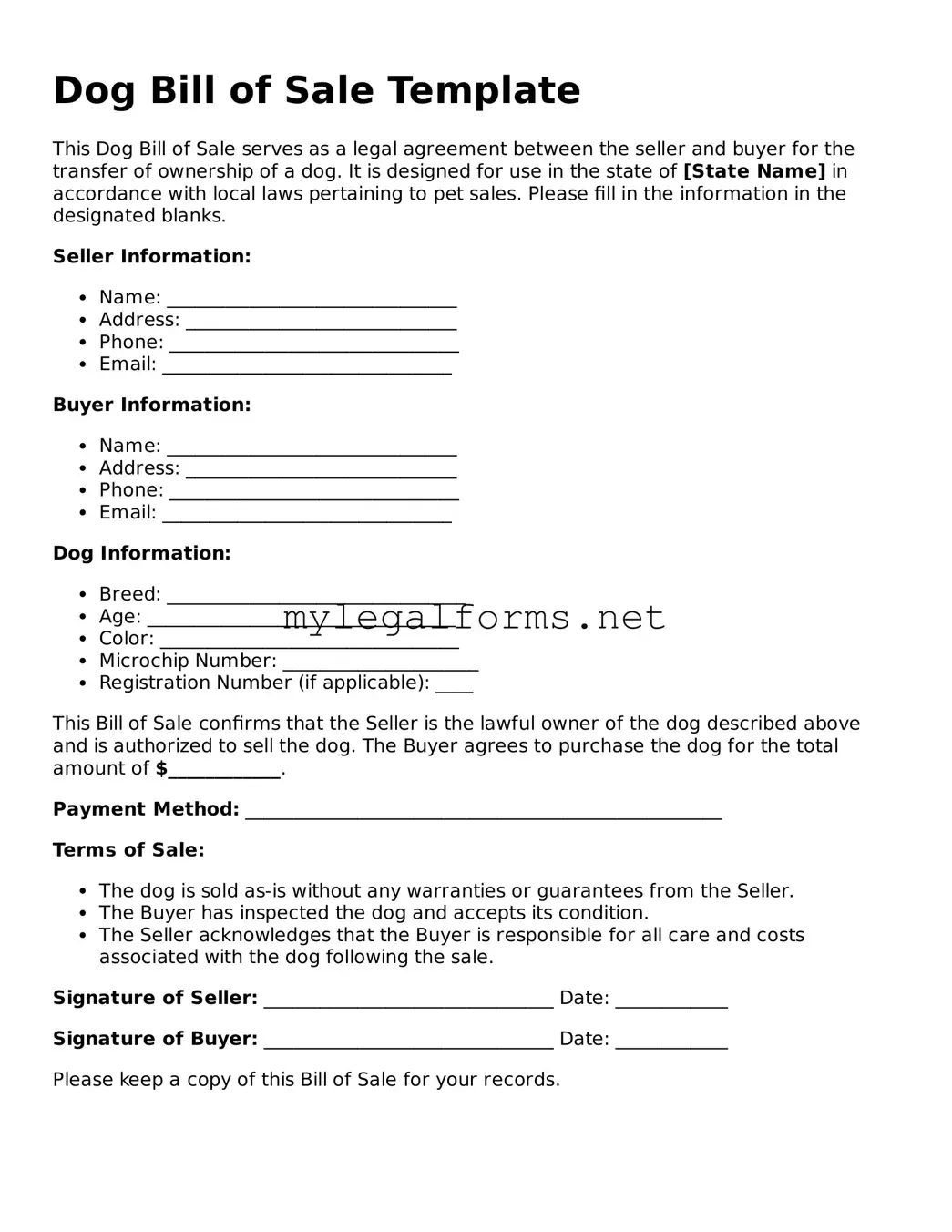When completing a Dog Bill of Sale form, individuals often overlook key details that can lead to complications later on. One common mistake is failing to provide accurate information about the dog. This includes the dog's breed, age, and any distinguishing features. Without precise details, future disputes about ownership or the dog's history may arise.
Another frequent error is neglecting to include the seller's and buyer's contact information. This omission can create difficulties if either party needs to reach out after the sale. Clear communication is essential for resolving any potential issues that may come up post-transaction.
Many people also forget to indicate the sale price. Leaving this field blank can lead to misunderstandings regarding the terms of the sale. Specifying the amount paid ensures that both parties have a clear understanding of the transaction's financial aspect.
Some individuals mistakenly assume that a signature is not necessary. However, both the seller and the buyer should sign the document to validate the agreement. A signature signifies that both parties agree to the terms laid out in the bill of sale.
Additionally, failing to document any health guarantees or warranties can be problematic. Buyers often expect certain assurances regarding the dog's health and temperament. Clearly outlining any guarantees in the bill of sale helps protect both parties and sets realistic expectations.
Another mistake is not including any relevant registration information, such as microchip details or kennel club registration numbers. This information can be crucial for the buyer, especially if they wish to show or breed the dog in the future.
People sometimes overlook the importance of stating whether the sale is final or if there are any return policies. This can lead to confusion if the buyer later decides they can no longer keep the dog. A clear return policy can help mitigate misunderstandings.
Some sellers may also forget to mention any known behavioral issues or training needs of the dog. Transparency about the dog's temperament is vital for the buyer to make an informed decision. It is essential to provide a complete picture of the dog's behavior and any special care it may require.
Another common oversight involves not keeping a copy of the completed bill of sale. Both parties should retain a copy for their records. This document serves as proof of the transaction and can be useful for future reference.
Finally, individuals sometimes neglect to review the entire form before submitting it. Taking a moment to double-check all entries can prevent mistakes that might complicate the sale process. Ensuring that every detail is accurate and complete will lead to a smoother transaction for both the seller and the buyer.
